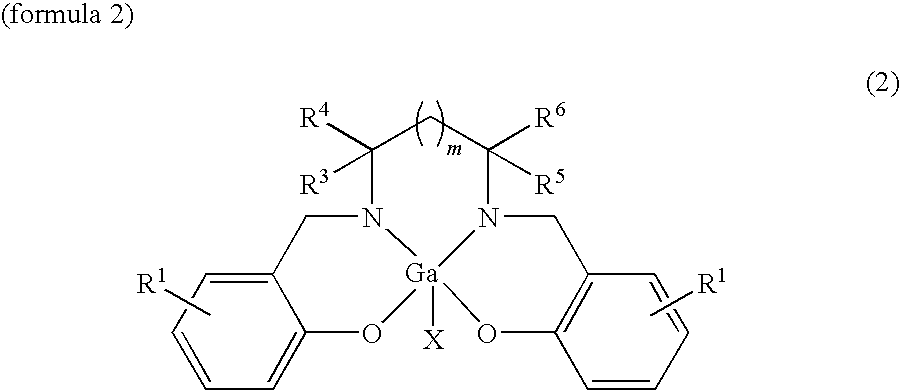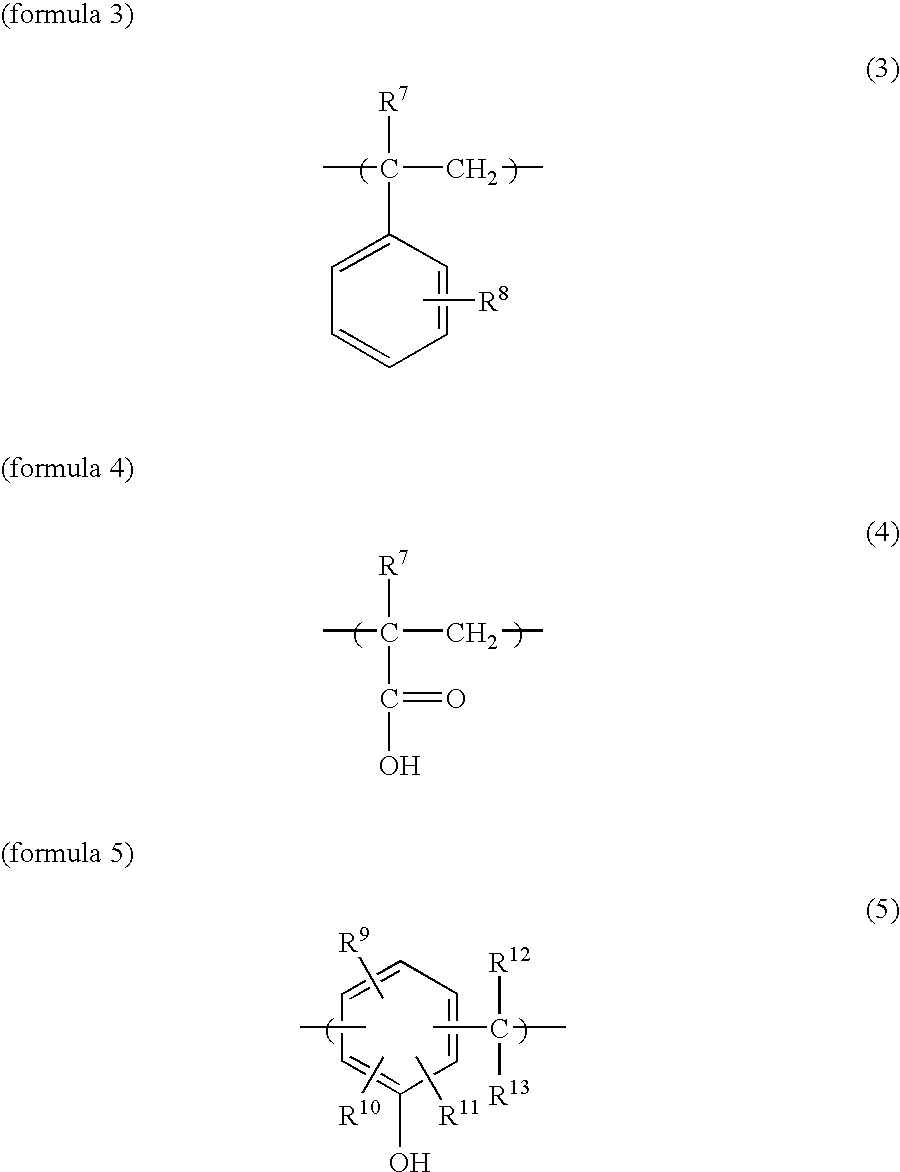Photosensitive composition, method for forming pattern, and method for manufacturing semiconductor device
- Summary
- Abstract
- Description
- Claims
- Application Information
AI Technical Summary
Benefits of technology
Problems solved by technology
Method used
Image
Examples
example 1
[0103]10 g of substituted polyhydroxystyrene, in which 60% of hydrogen (H) in phenolic hydroxy group is substituted with t-butoxycarbonyl group, 1 g of dimethyl diphenyl gallium, 0.2 g of triphenyl sulfonium trifluoromethanesulfonate, and 0.02 g of diaminodiphenyl methane were dissolved in 120 g of methyl 3-methoxy propionate, and then the solvent was filtered with a filter of 0.2 μm to prepare a composition solution (I). The prepared composition solution was applied over the silicon wafer, and then the wafer was baked at 100 degrees C. for two minutes to form a photoresist film having a thickness of 60 nm. A line-and-space pattern was transferred over the formed photoresist film at 10 mJ / cm2 by employing EUV radiation of a wave length of 13.5 nm, and then a post exposure bake was carried out for two minutes at 90 degrees C., and was developed with tetramethylammonium hydroxide aqueous solution for 60 seconds at 23 degrees C., and then was rinsed with water for 30 seconds. It was fo...
example 2
[0108]The pattern was formed similarly as in Example 1, except that gallium bromide was employed in the preparation of the composition solution (I) employed in Example 1 in place of dimethyl diphenyl gallium and that the different irradiation level of EUV radiation was employed. The sensitivity was 15 mJ / cm2. It was found in an observation of the patterned photoresist by employing a SEM that the above-described line-and-space pattern of a stroke width of 30 nm was successfully resolved. The value of 3 nm was obtained in the measurement of the line edge roughness.
[0109]The results show that respective better values of the sensitivity, the resolution and the line edge roughness were obtained in Example 2, as compared with that obtained in the Comparative Example 1. This manifests that it was found the photoresist pattern was created with higher sensitivity, higher resolution and reduced line edge roughness by employing the lithographic technology presented in Example 2.
example 3
[0110]The pattern was formed similarly as in Example 1, except that gallium chloride-phthalocyanine was employed in the preparation of the composition solution (I) employed in Example 1 in place of dimethyl diphenyl gallium and that the different irradiation level of EUV radiation was employed. The sensitivity was 17 mJ / cm2. It was found in an observation of the patterned photoresist by employing a SEM that the above-described line-and-space pattern of a stroke width of 30 nm was successfully resolved. The value of 2 nm was obtained in the measurement of the line edge roughness.
[0111]The results show that respective better values of the sensitivity, the resolution and the line edge roughness were obtained in Example 3, as compared with that obtained in the Comparative Example 1. This manifests that it was found the photoresist pattern was created with higher sensitivity, higher resolution and reduced line edge roughness by employing the lithographic technology presented in Example 3...
PUM
 Login to View More
Login to View More Abstract
Description
Claims
Application Information
 Login to View More
Login to View More - R&D
- Intellectual Property
- Life Sciences
- Materials
- Tech Scout
- Unparalleled Data Quality
- Higher Quality Content
- 60% Fewer Hallucinations
Browse by: Latest US Patents, China's latest patents, Technical Efficacy Thesaurus, Application Domain, Technology Topic, Popular Technical Reports.
© 2025 PatSnap. All rights reserved.Legal|Privacy policy|Modern Slavery Act Transparency Statement|Sitemap|About US| Contact US: help@patsnap.com



